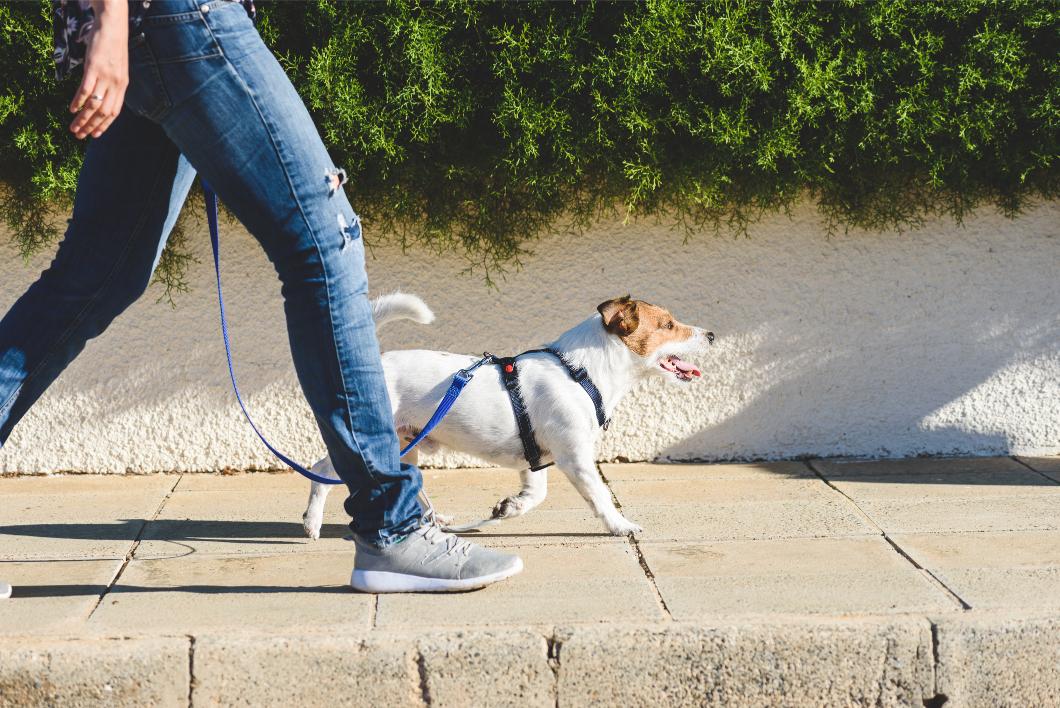
When summer temperatures rise, it’s not just people who feel the heat—our pets do too, especially through their sensitive paws. Hot pavement, sand, and decking can cause painful burns or discomfort. While your furry friend may be eager to get outside and play, it’s important to protect their paws from hot surfaces. Here are six simple, but effective tips from our caring team for hot pavement pet safety this summer.
6 Paw Protection Summer Strategies
1. Test the Pavement Before Walks
Diligent hot pavement pet safety includes testing the pavement itself. Before heading out, do the “seven-second test.” Place the back of your hand on the pavement. If you can’t hold it there comfortably for at least seven seconds, it’s too hot for your pet’s paws. Asphalt can reach temperatures of 125°F or more on a 90°F day—hot enough to cause burns in less than a minute.
2. Walk During Cooler Times of Day
Plan walks early in the morning or later in the evening when the ground is cooler. Avoid midday heat, when surfaces are at their hottest and UV exposure is at its peak. Not only will this protect your pet’s paws, but it will also reduce the risk of overheating and heat stroke, particularly for senior pets and pets with extra “fluff.”
3. Stick to Grass and Shaded Paths
Whenever possible, walk your pet on grassy areas or shaded trails. Grass stays significantly cooler than concrete or asphalt and is much gentler on paws. Parks, lawns, and wooded trails are great alternatives to hot sidewalks or streets.
4. Use Protective Paw Gear
Dog booties or paw wax are paw protection summer staples. Booties act as insulating barriers, while paw wax helps moisturize and protect against heat and rough terrain. Be sure to introduce booties slowly and ensure a good fit so your pet can walk comfortably.
5. Keep Paw Pads Moisturized
Dry, cracked paw pads are more vulnerable to heat-related injuries. Responsible pet paw care includes using a pet-safe paw balm or moisturizer to keep pads supple and less prone to damage. Avoid human lotions, which can be harmful to pets. Regular moisturizing protects paws from heat and other elements like salt or ice in winter.
6. Check Paws Regularly for Injury
After outdoor adventures, take a few moments to inspect your pet’s paws. Look for signs of burns (discoloration, redness, or blisters), cuts, or embedded debris. If your pet is limping, licking their paws excessively, or seems uncomfortable, consult your veterinarian.
Contact Us for More Pet Paw Care Tips
Hot weather brings lots of opportunities for outdoor fun with your pet, but it’s important to be mindful of the risks heat can pose—especially to their tender paws. With a few simple precautions, you can keep your pets happy, healthy, and safe all summer long. Please contact us for more pet paw care tips or if it’s time for your pet’s checkup.

